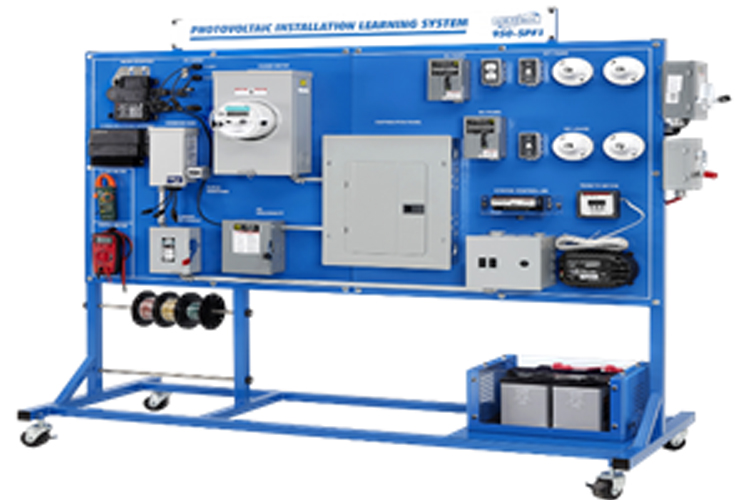Laboratory
Renewable Energy Sources Lab
Renewable Energy Sources Lab
About
The objective of this renewable energy sources lab is to give the students a favourable atmosphere to comprehend certain crucial ideas and applications in the field of renewable energy conversion and sustainable power systems. This laboratory is designed to help students become proficient in the operation and analysis of solar photovoltaic systems, wind energy converters, fuel cells, and small-scale hydro systems. It enables students to evaluate the performance of various renewable sources under changing environmental conditions and to understand interfacing techniques with power electronics modules like MPPT controllers, inverters, and DC-DC converters. Additionally, the lab provides hands-on experience in integrating renewable sources with microgrids, using open- and closed-loop control strategies for load management and power balancing. The students can also learn to implement real-time monitoring through IoT modules and simulate renewable setups using MATLAB and Simulink for design validation, grid compliance, and optimization.
Core Areas
Facilities
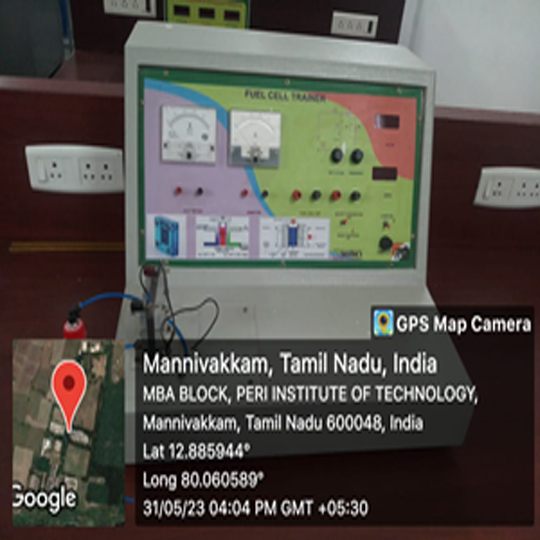
Fuel Cell Trainer Kit
In Renewable Energy Systems laboratories, the Fuel Cell Trainer Kit serves as a vital educational tool for demonstrating the principles of electrochemical energy conversion, where hydrogen and oxygen react to produce clean electricity and water as a by-product. It allows students to explore the functionality of proton exchange membrane (PEM) fuel cells, measure output parameters, and investigate factors like fuel flow rate, cell temperature, and load response. Through hands-on experiments, learners can analyze efficiency, power density, and real-time voltage-current behaviour, often integrating the trainer with renewable energy sources such as solar-powered electrolyzers for hydrogen generation.
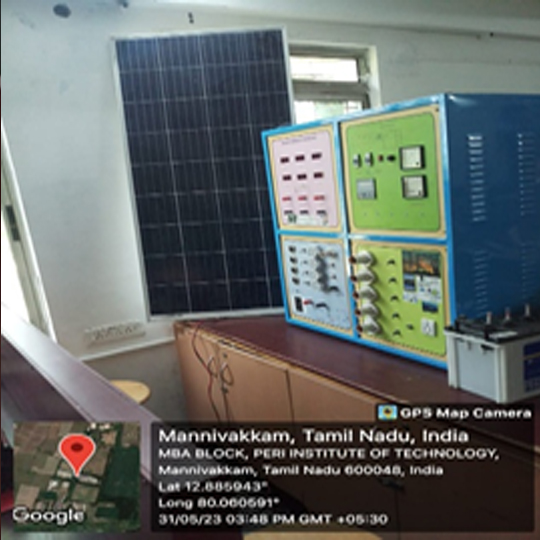
Solar Wind Hybrid Kit
In Renewable Energy Systems laboratories, the Solar-Wind Hybrid Kit serves as a comprehensive platform for studying the integration of photovoltaic and wind energy sources in hybrid power generation. This kit allows students to experiment with energy balancing, load management, and storage coordination between solar panels and miniature wind turbines under varying environmental conditions. It supports the understanding of power conditioning through charge controllers, inverters, and battery storage modules, enabling real-time evaluation of energy flows and system efficiency. Learners can explore MPPT algorithms, fault detection, and grid interfacing techniques, simulating scenarios such as rural electrification and backup systems.
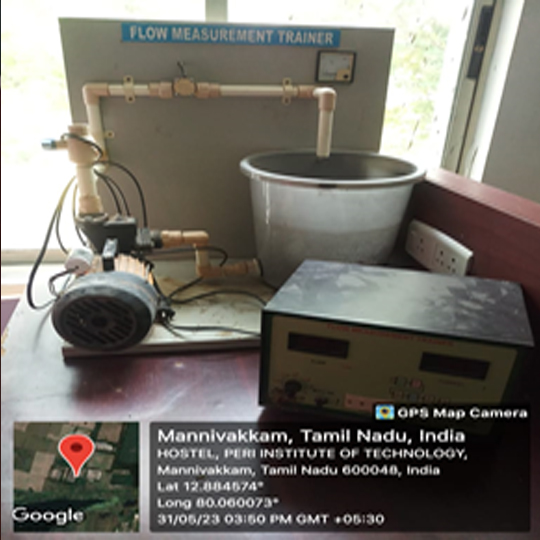
Flow Measurement
In Renewable Energy Systems laboratories, flow measurement is a critical tool for analyzing and optimizing the performance of energy conversion systems, particularly in solar thermal, wind, hydro, and bioenergy applications. It enables students to monitor the flow of fluids like air, water, and steam, which directly influence system efficiency, heat transfer rates, and energy output. Devices such as rotameters, ultrasonic flow meters, and turbine flow sensors help assess the real-time behavior of components like solar collectors, biomass digesters, or hydro turbines. Through hands-on experiments, learners can study pressure-flow relationships, calibrate sensors, and apply control strategies based on flow data, fostering a deeper understanding of energy harvesting, distribution, and system integration within sustainable power setups.
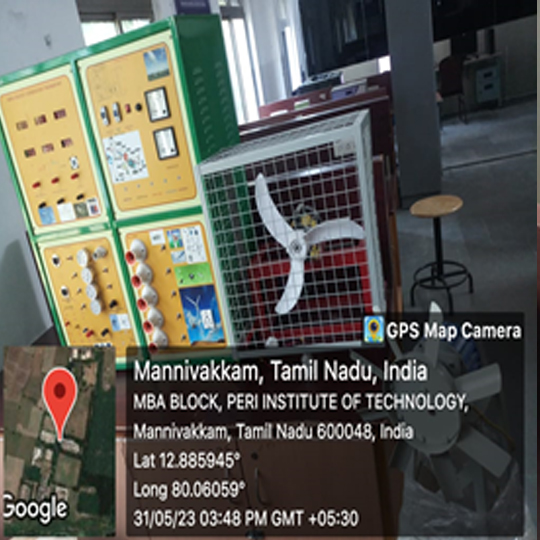
Wind Energy Generator Module
In Renewable Energy Systems laboratories, the Wind Energy Generator Module is used to simulate and analyze the conversion of kinetic wind energy into electrical power, providing students with hands-on experience in small-scale wind turbine operation. This module typically includes a miniature wind turbine, generator, load bank, and instrumentation for measuring voltage, current, and rotational speed. It enables learners to study power output under varying wind speeds, evaluate tip speed ratio, and understand efficiency curves and cut-in/cut-out speeds. Integrated with controllers and data acquisition systems, the module supports experiments on maximum power point tracking (MPPT), charge regulation, and grid interfacing, making it essential for exploring wind energy principles, hybrid system integration, and sustainable power generation techniques.
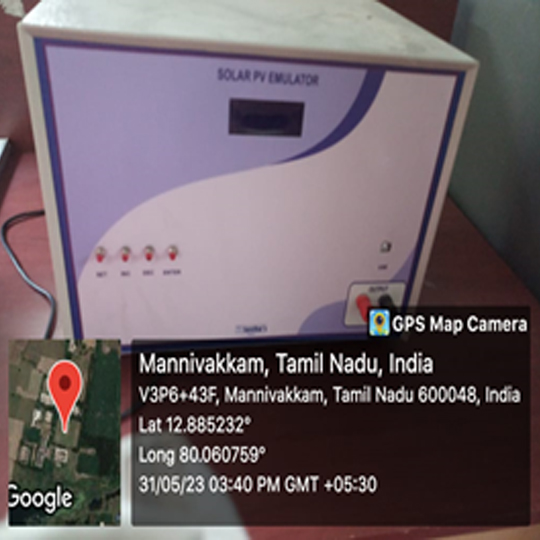
Solar PV Emulator
In Renewable Energy Systems laboratories, the Solar PV Emulator is a programmable device used to replicate the electrical behavior of real solar panels under controlled conditions, enabling students to study photovoltaic performance without relying on actual sunlight. It allows users to simulate varying irradiance, temperature, shading effects, and panel characteristics such as open-circuit voltage (Voc) and short-circuit current (Isc). This facilitates experiments on Maximum Power Point Tracking (MPPT) algorithms, inverter efficiency, and charge controller behavior. Learners can analyze I-V and P-V curves, test grid-connected and off-grid setups, and validate system responses using MATLAB or LabVIEW-based interfaces. The emulator supports safe, repeatable, and precise testing, making it indispensable for training in solar energy conversion, smart grid integration, and hybrid renewable systems.
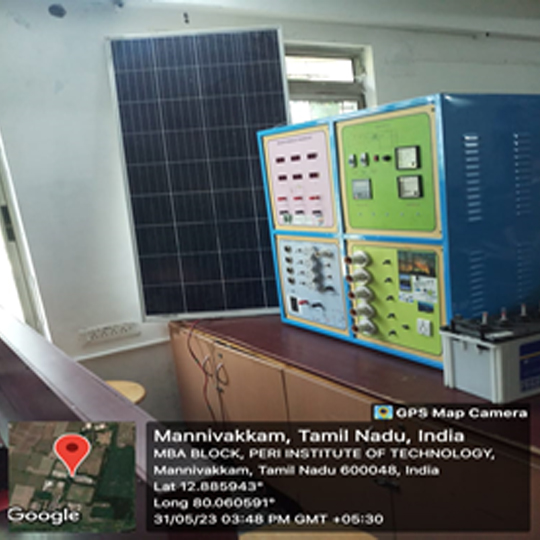
PV Module Trainer Kit
In Renewable Energy Systems laboratories, the PV Module Trainer Kit is a hands-on educational platform designed to help students understand the principles and performance of solar photovoltaic systems. It enables learners to study I-V and P-V characteristics, simulate irradiance and temperature effects, and analyze energy conversion efficiency under controlled conditions. The kit typically includes solar panels, charge controllers, voltmeters, ammeters, and load modules, allowing experiments on battery charging, load response, and MPPT techniques. Students can explore both off-grid and grid-tied configurations, gaining practical experience in system design, fault diagnosis, and real-time monitoring.






